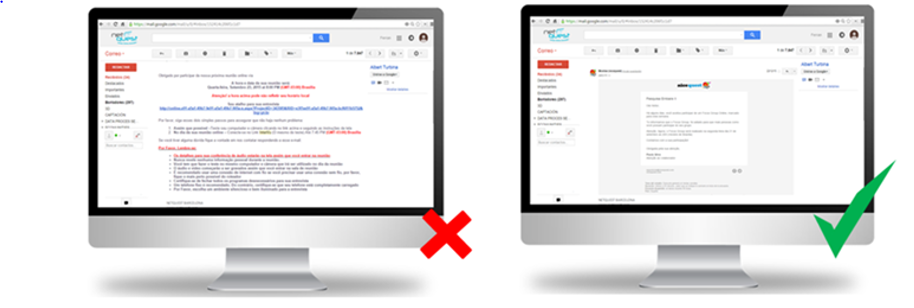 Knowing the past enables us to understand the present better and helps us to visualise the future. It is perhaps the reason why history awakens so many passions. The same happens in the world of market research. Understanding what has been done before we arrived helps us to think about a more successful future. But not only that! It forces us to realise the need to appreciate the effort and intellect of many other professionals over the last 100 years.
Knowing the past enables us to understand the present better and helps us to visualise the future. It is perhaps the reason why history awakens so many passions. The same happens in the world of market research. Understanding what has been done before we arrived helps us to think about a more successful future. But not only that! It forces us to realise the need to appreciate the effort and intellect of many other professionals over the last 100 years.
Talking of history, it is a discipline in which asking lots of questions is important, no matter how basic they may seem. That is why we must ask ourselves what exactly is Market Research? ESOMAR (European Society of Opinion and Marketing Research) defines it as “the systematic gathering, recording, processing, analysis and objective presentation of information about the behaviour, needs, attitudes and opinions, motivations, etc., of individuals or organisations”. This definition allows us to gain a sense that market research was probably being carried out a long time before people knew what market research was.
One of the objectives of market research is to provide data to validate ideas or hypotheses. As John M. Keynes said, “ideas shape the course of history”. Hence it is so important to validate our ideas before making a decision, given that they hold a lot of importance in the course of history! You can therefore already imagine that market research has played a key role in the success of many businesses and companies since the start of the 20th century.
If we take a brief and summarised trip through the history of our discipline, we will see that its evolution looks like this:
- 1830- 1930:
Creation of the first industrial statistics. - 1930-1940:
Development of random sampling. The US government creates statistical offices to regularly gather economic and commercial data from its population.
- 1940-1950:
Companies incorporate market research into the decision-making process. Furthermore, the way of sampling and evaluating human behavior is defined.
- 1950-1960:
Experimental design and variance analysis emerges. Importance is given to the methodology of causal experimentation.
- 1960-1970:
Multivariate methods and methods of simulation start to be used.
- 1970-1980:
Development of Consumer Theories and emergence of the internet.
- 1980-1995:
Creation of interviews with telephone and IT support, joint and causal analyses emerge, and importance is given to the quality of data.
- 1995-2010:
Explosion of databases. Emergence of techniques to exploit databases such as data mining. Generalisation of the internet as another means of collecting data.
- 2010 - present day:
Access to millions of population data, emergence of the infamous big data and the need to professionalise the processing of data and information with the creation of data science.
Looking back, it seems that evolution through innovation happens at an increasingly fast rate, if we were to draw it on a graph, we would end up with an exponential curve. The inflection point of this curve occurs, like in society in general, with the emergence of the internet in homes. In our world, this created an explosion of databases, continuous methodological innovations that enable much more information to be collected from consumers than just their opinion. Nowadays it is possible to find out which websites they visit, what advertising they have been exposed to, through which points of their cities they travel, which shops they have been in, what they have purchased online, and so on.
to draw it on a graph, we would end up with an exponential curve. The inflection point of this curve occurs, like in society in general, with the emergence of the internet in homes. In our world, this created an explosion of databases, continuous methodological innovations that enable much more information to be collected from consumers than just their opinion. Nowadays it is possible to find out which websites they visit, what advertising they have been exposed to, through which points of their cities they travel, which shops they have been in, what they have purchased online, and so on.
The future? As you can imagine, I do not know, but analysing the past and seeing the current situation where we have access to a large amount of information about an individual collected securely and ethically, we will need to find models of artificial intelligence to be able to predict behaviour and opinions of the population in real time. We will see how statisticians, mathematicians, anthropologists and data scientists join market researchers, economists and psychologists to establish the bases of the future of our industry. Growth will come from the joining of disciplines and from sharing experience and knowledge.
Finally, I would like to take advantage of this space to stress that, although the future is very promising, it will only be possible if the values of market research are respected: ethics, good practice and respect for private information. It is in all of our hands to guarantee this bright future for our sector.






